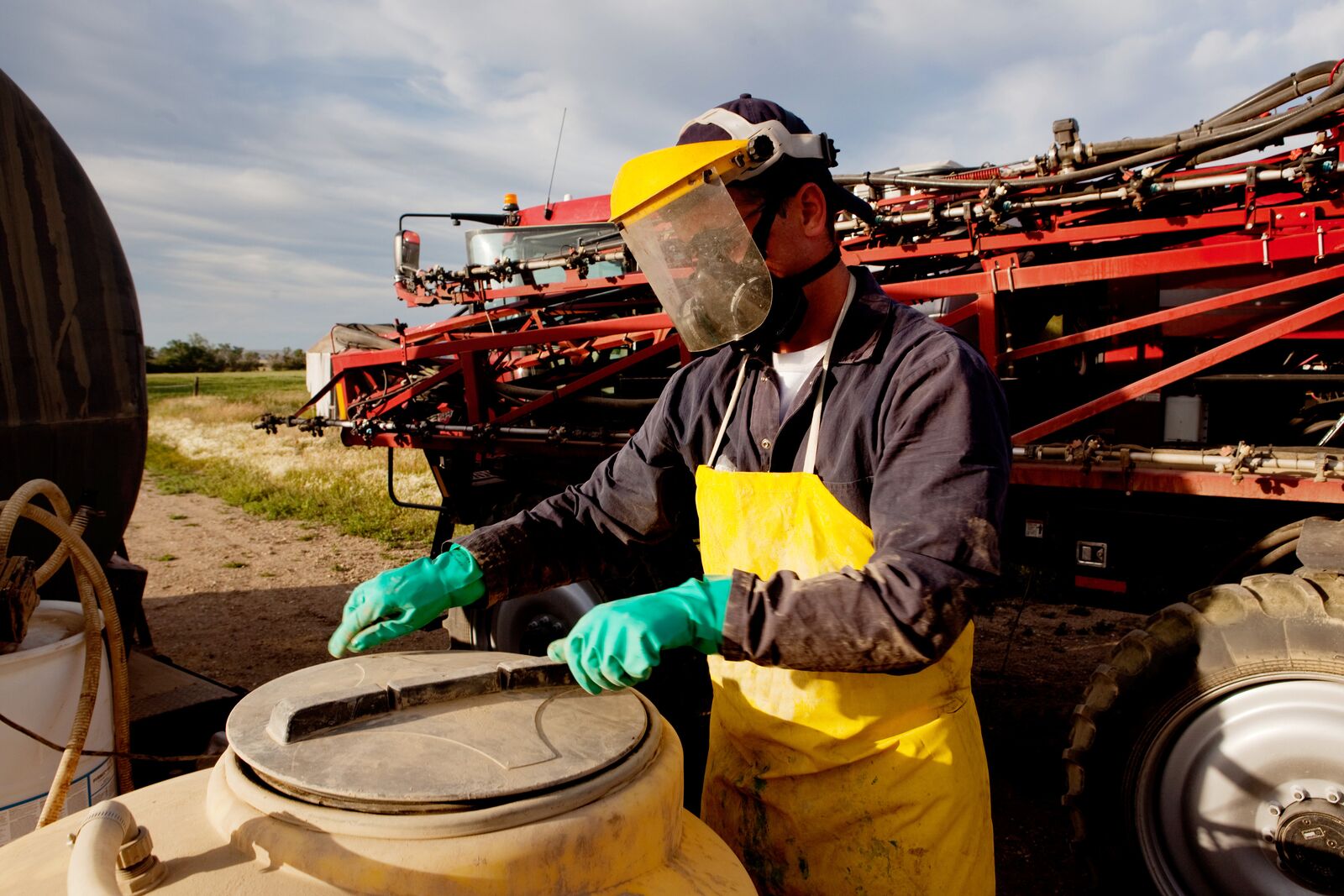Herbicide programs are changing from a single herbicide to a multiple herbicide mix for combating weed resistance. Multi-herbicide tank mixes require growers to be familiar with even more Safety Data Sheets (SDS) to understand all safety precautions involved. After assessing SDS sheets, plan ahead to assure you have plenty of personal protective equipment (PPE) "on hand" to get you through the season.
Being familiar with pesticide safety will not only be valuable during the mixing stage, but throughout the handling process from spraying to clean up.
Pay Attention!
There is no substitute for following all safety precautions on the label. PPE is your first line of defense against potential exposures to pesticides. Keep in mind that the PPE listed is the minimum amount of PPE that must be worn and it IS NOT A SUGGESTION! Mixing concentrated pesticides requires even more attention to PPE because you’re working with such concentrated pesticide chemicals. Make it a practice to wear more than the minimum needed, heed to the “better to be safe….than sorry” axiom.

Routes of Exposure
There are three main entry routes for pesticides to enter the body:
Dermal: Absorption is a common route for exposure. The hands and forearms are the most common sites for accumulation during pesticide usage and unwashed hands cross-contaminate other parts of the body. Eyes are extremely absorptive and should "always" be protected. Goggles and or a face shield should be used to prevent concentrated chemicals from being splashed on to the face.
Respiratory: Exposures by inhalation can occur during the mixing of wettable powders, dusts, or granules. Larger particles inhaled tend to stay on the surface of the tongue, nasal passages and do not enter the lungs. Smaller particles can directly enter the lungs. Once chemicals are inhaled into the lungs, there is a fast route of entry into the blood stream.
Oral: Avoid eating, drinking or smoking prior to washing your hands. Oral ingestion of pesticides and herbicides can come from the hands to the mouth. Never blow out clogged hoses or nozzles with your mouth. Ingested materials can be absorbed anywhere along the gastrointestinal tract. The small intestine is the major absorption site and once absorbed they can circulate throughout the body.
Common PPE Considerations
- Goggles
- Face shield
- Rubber gloves
- Respirator
- Disposable Coveralls/chemical resistant protective suits
- Long sleeve shirts and long pants


